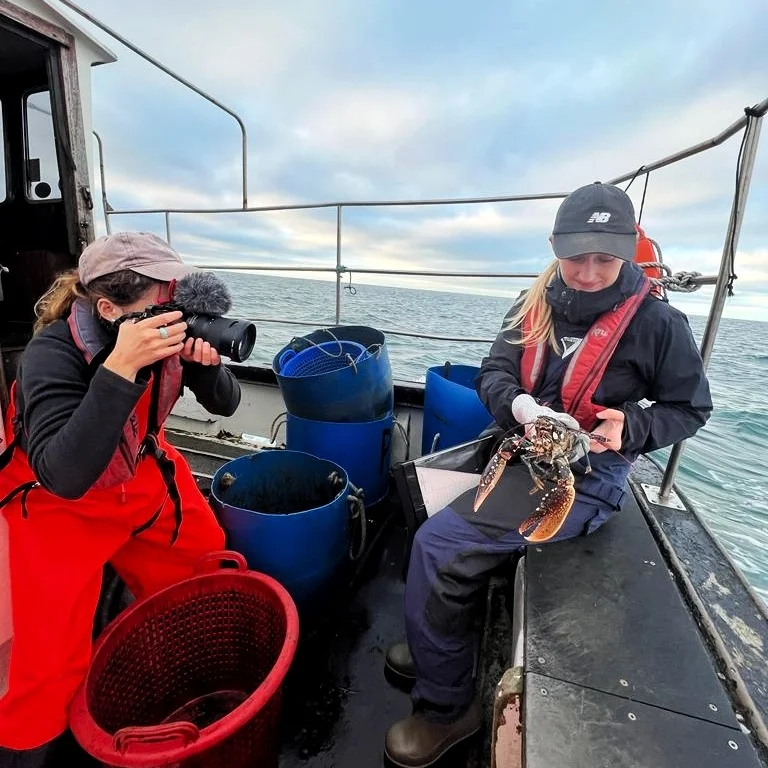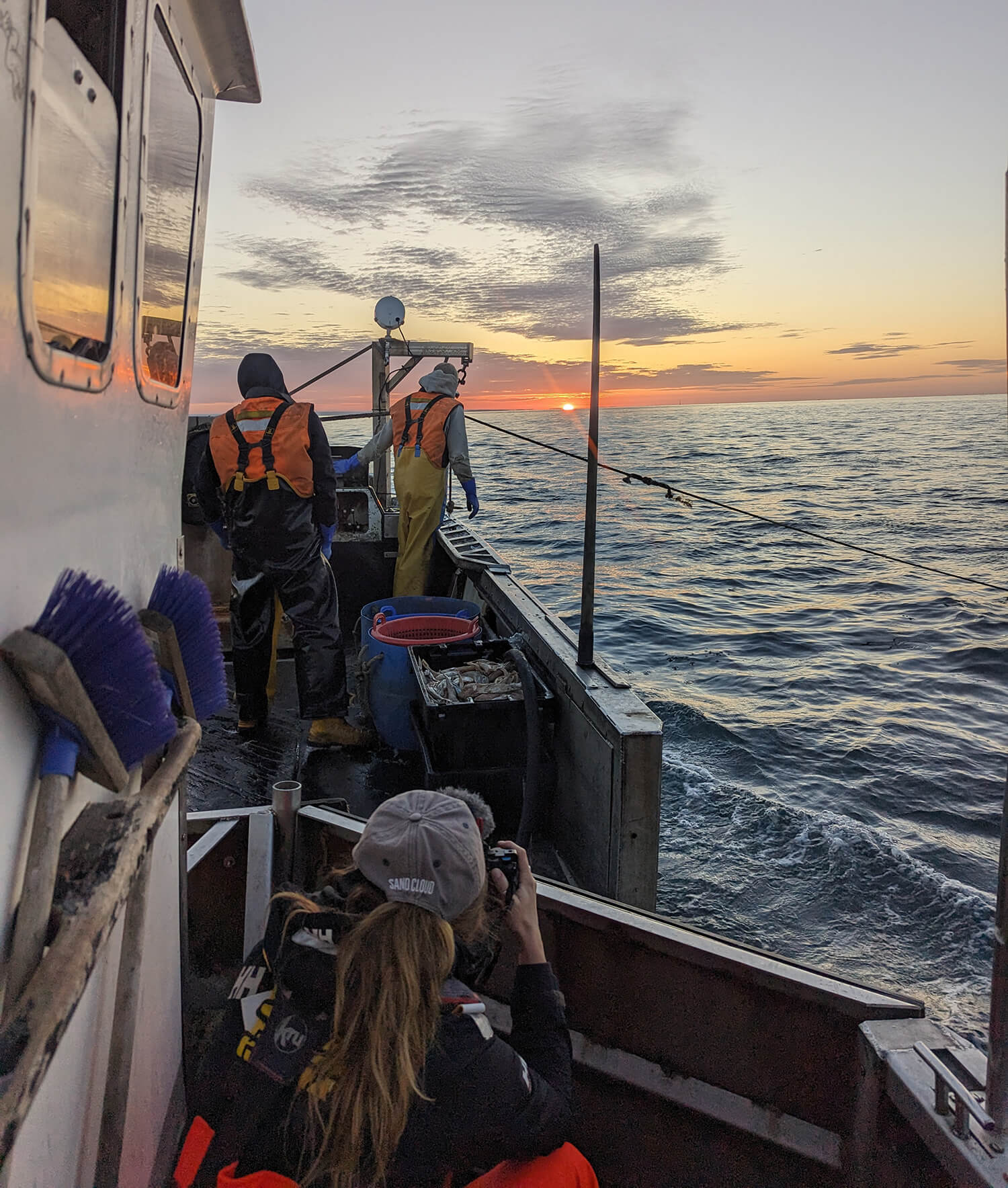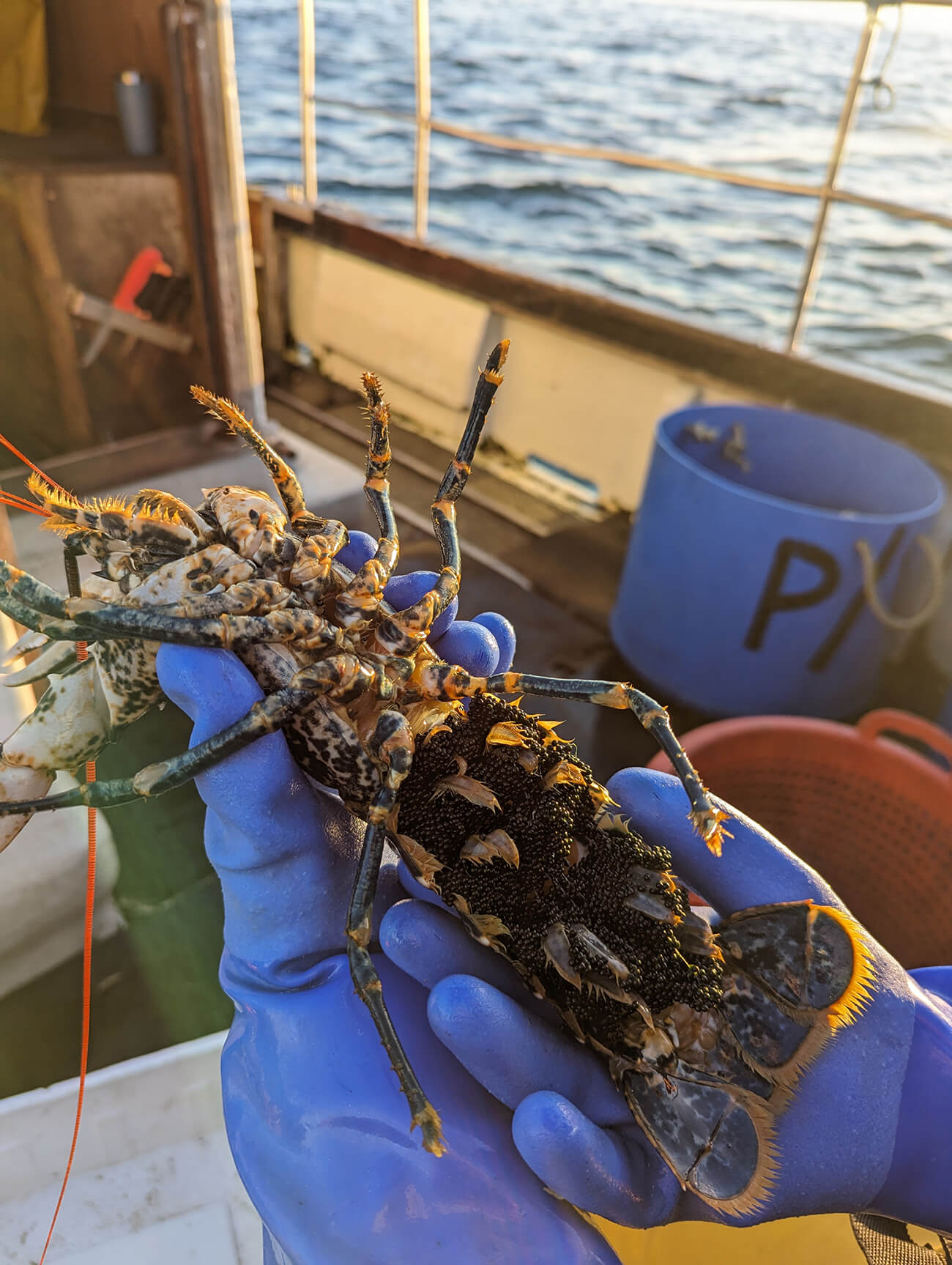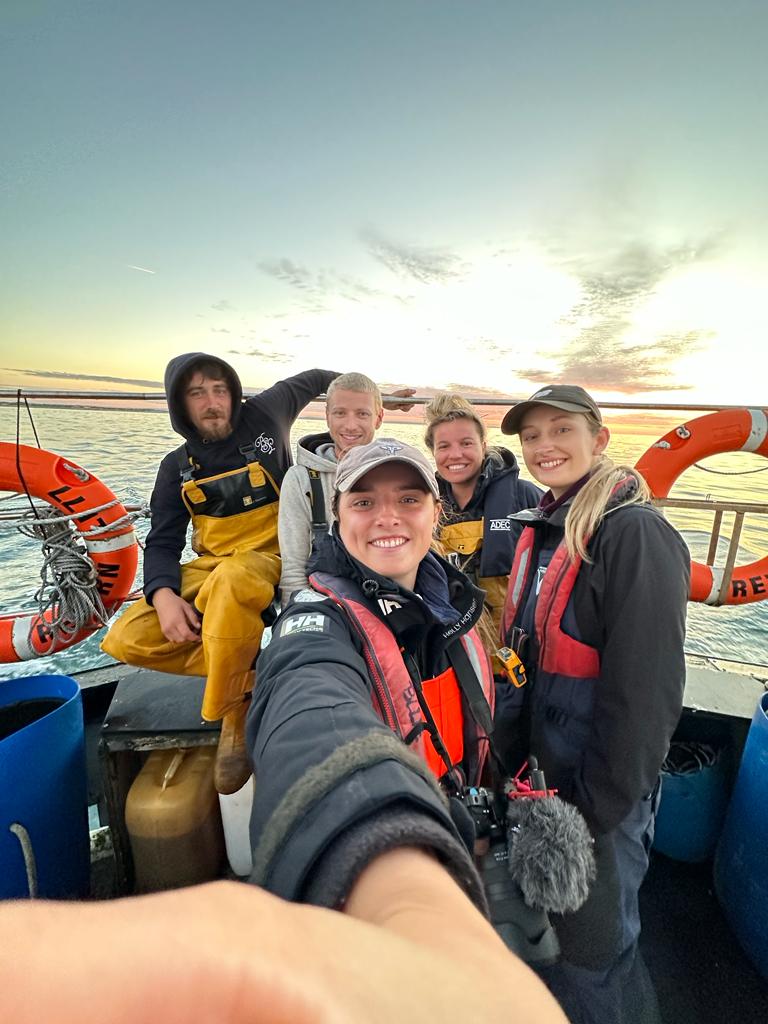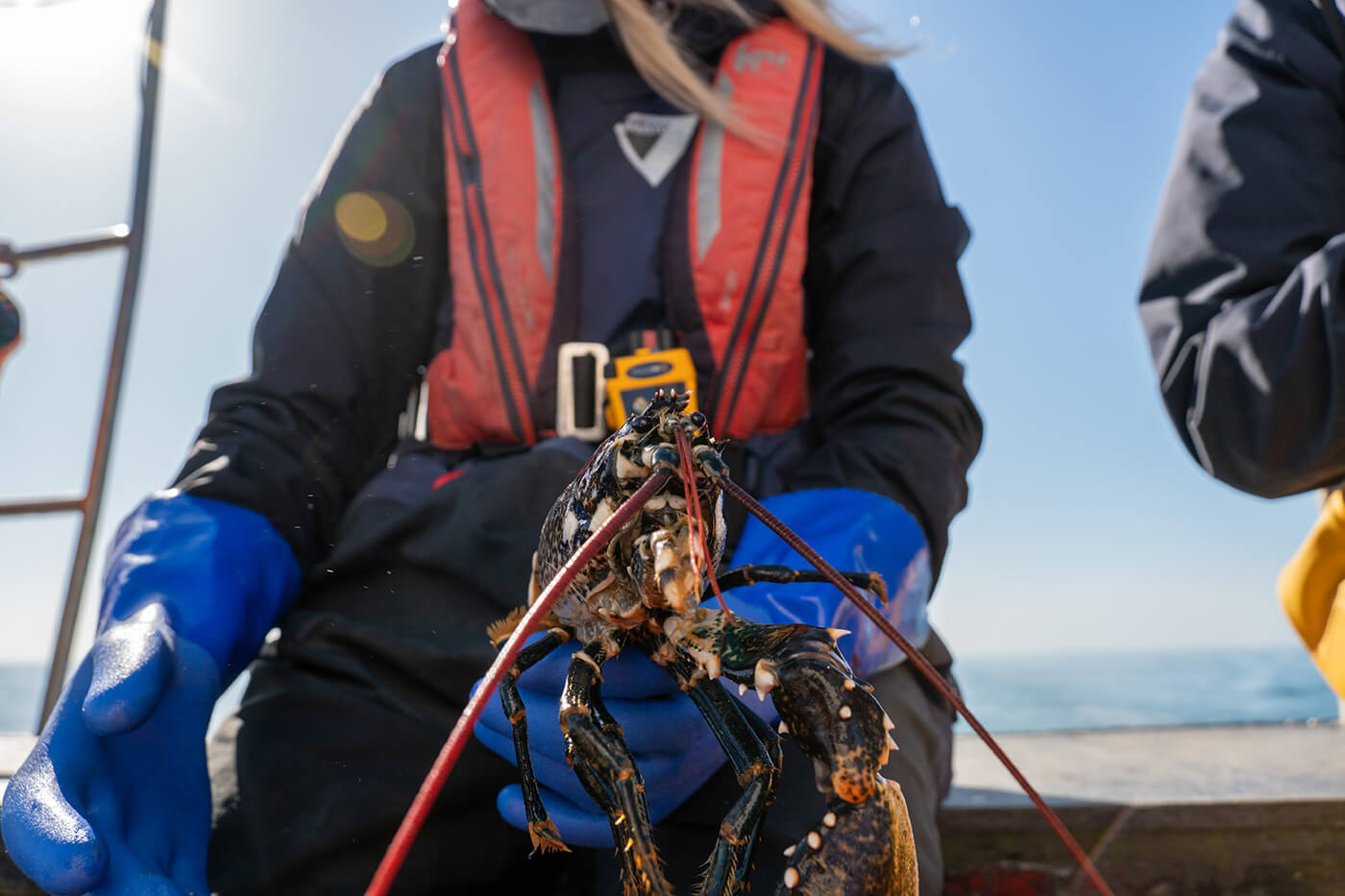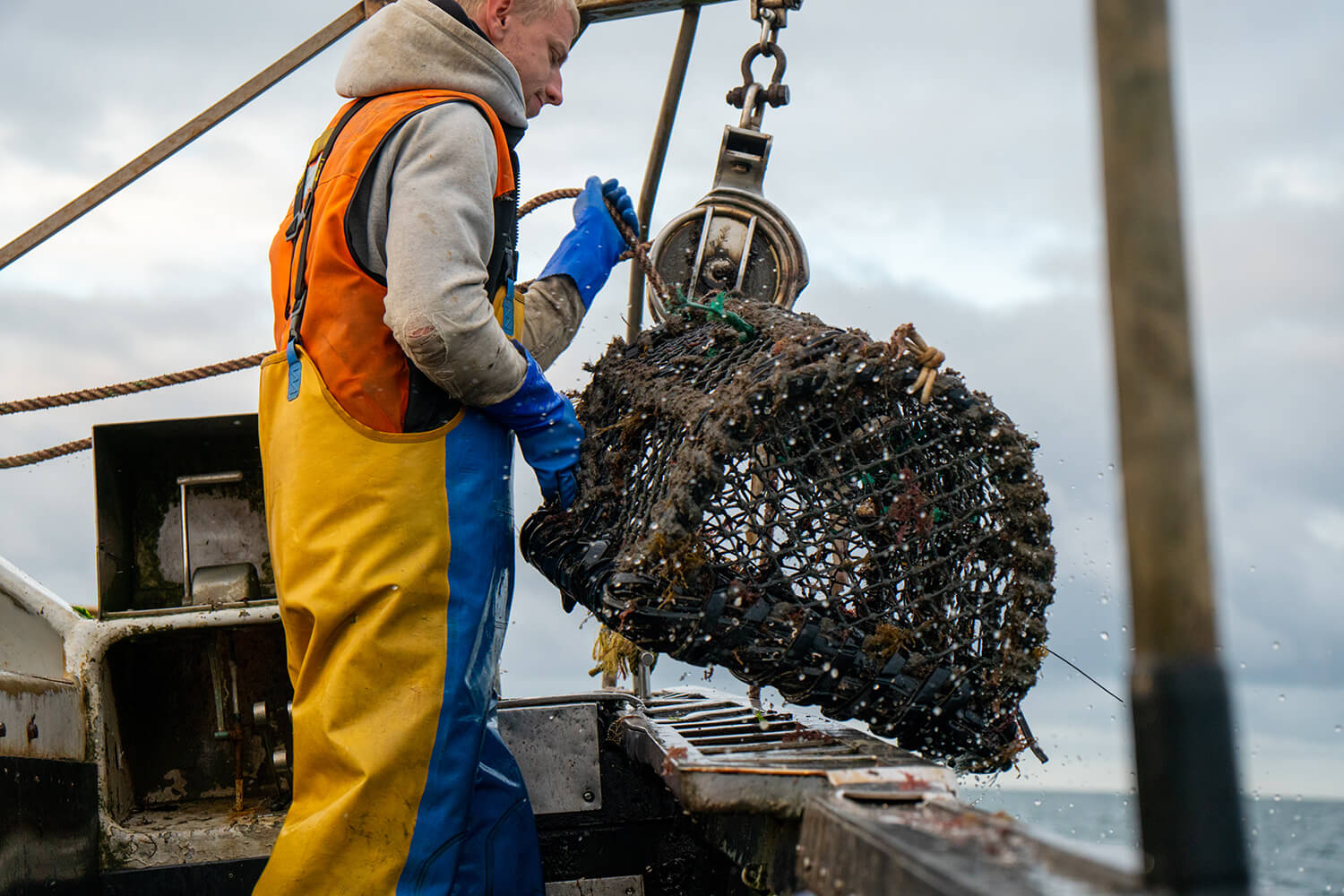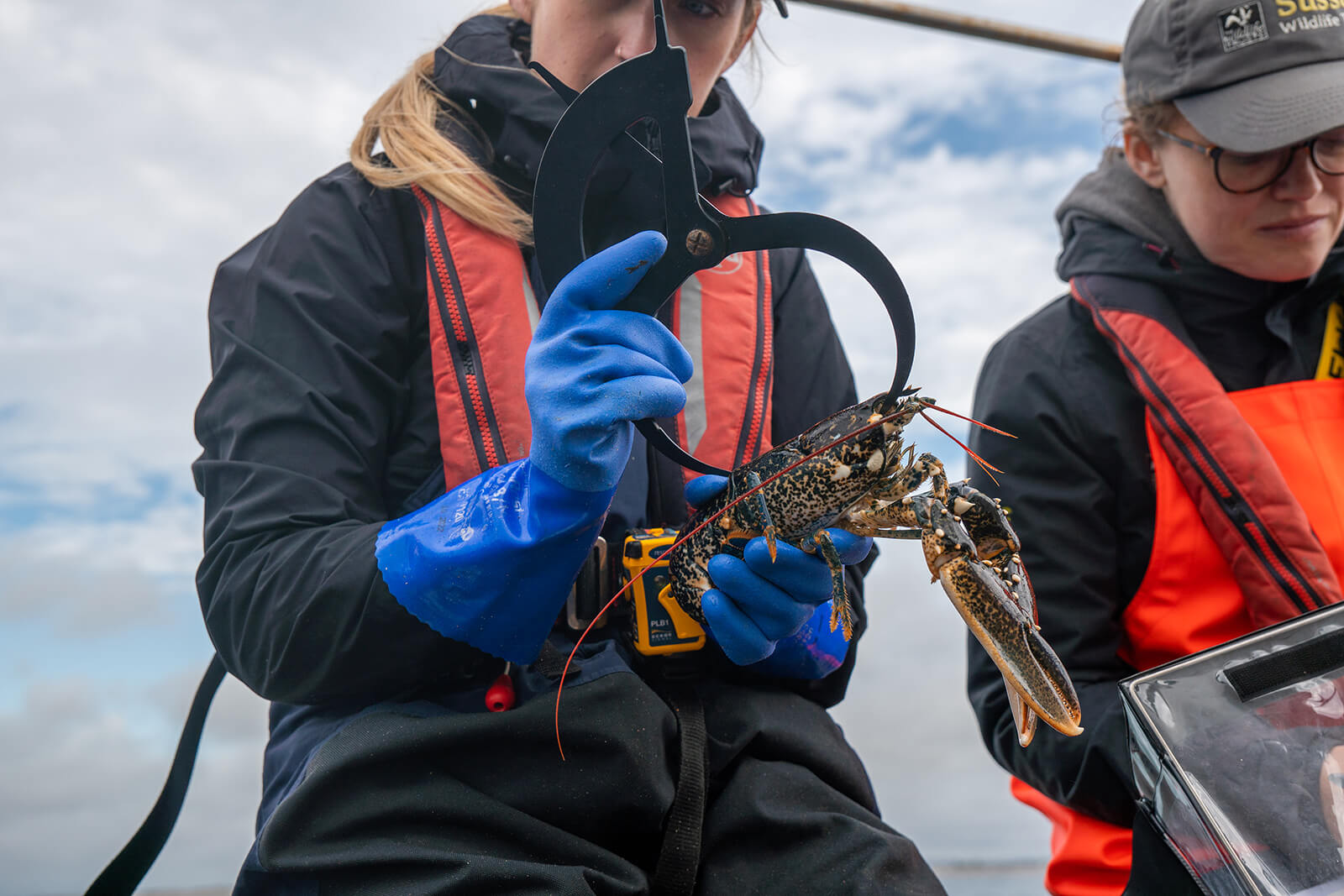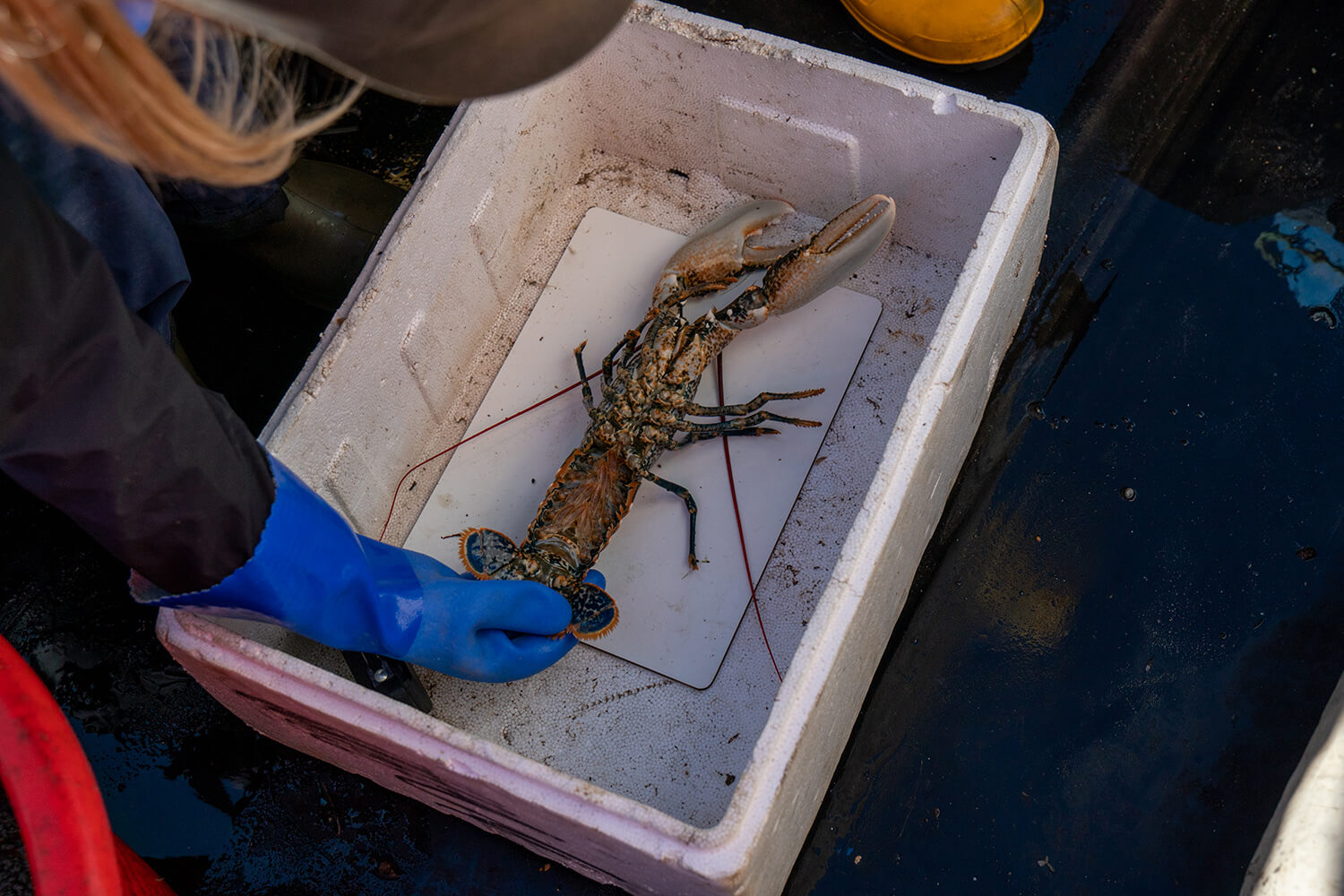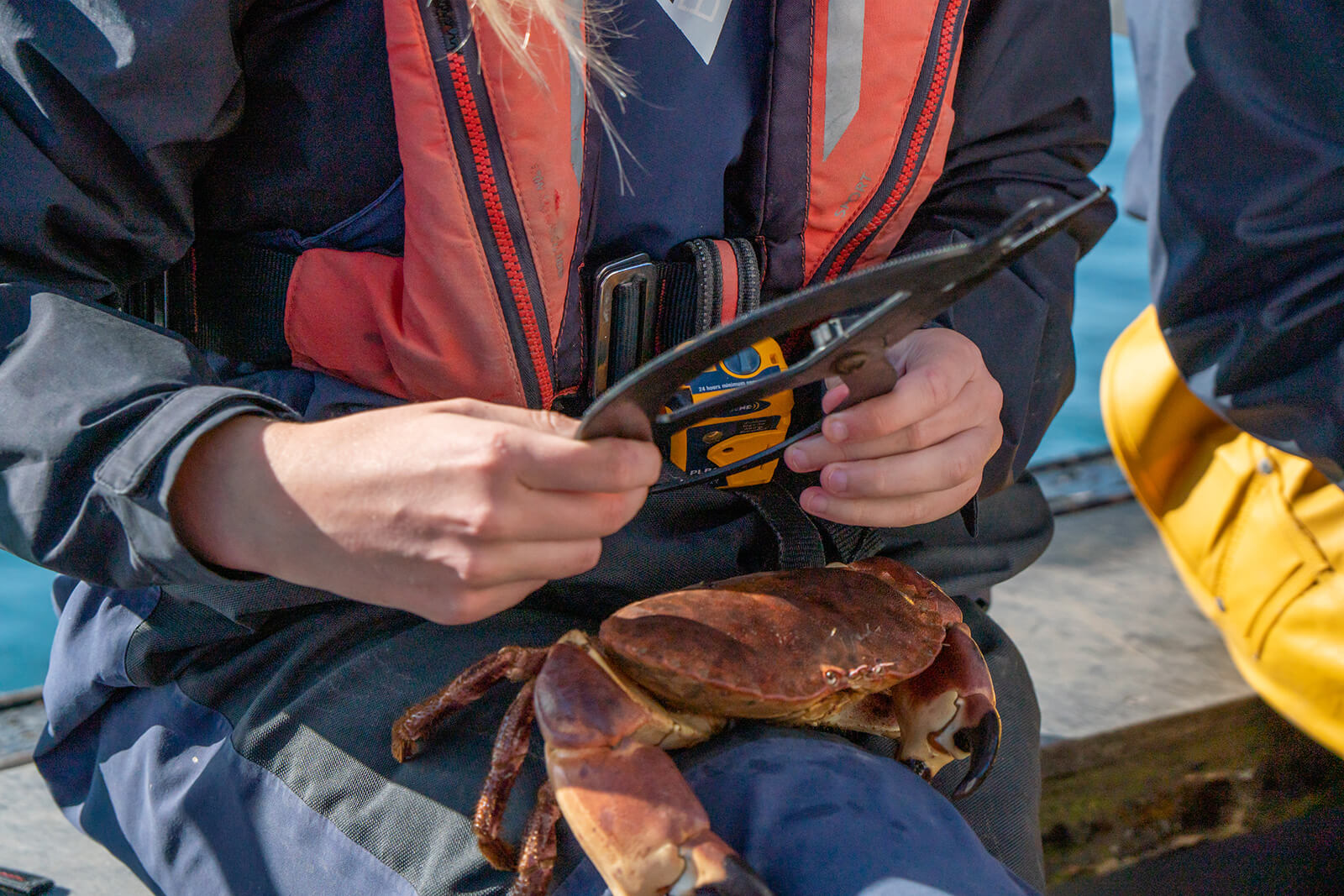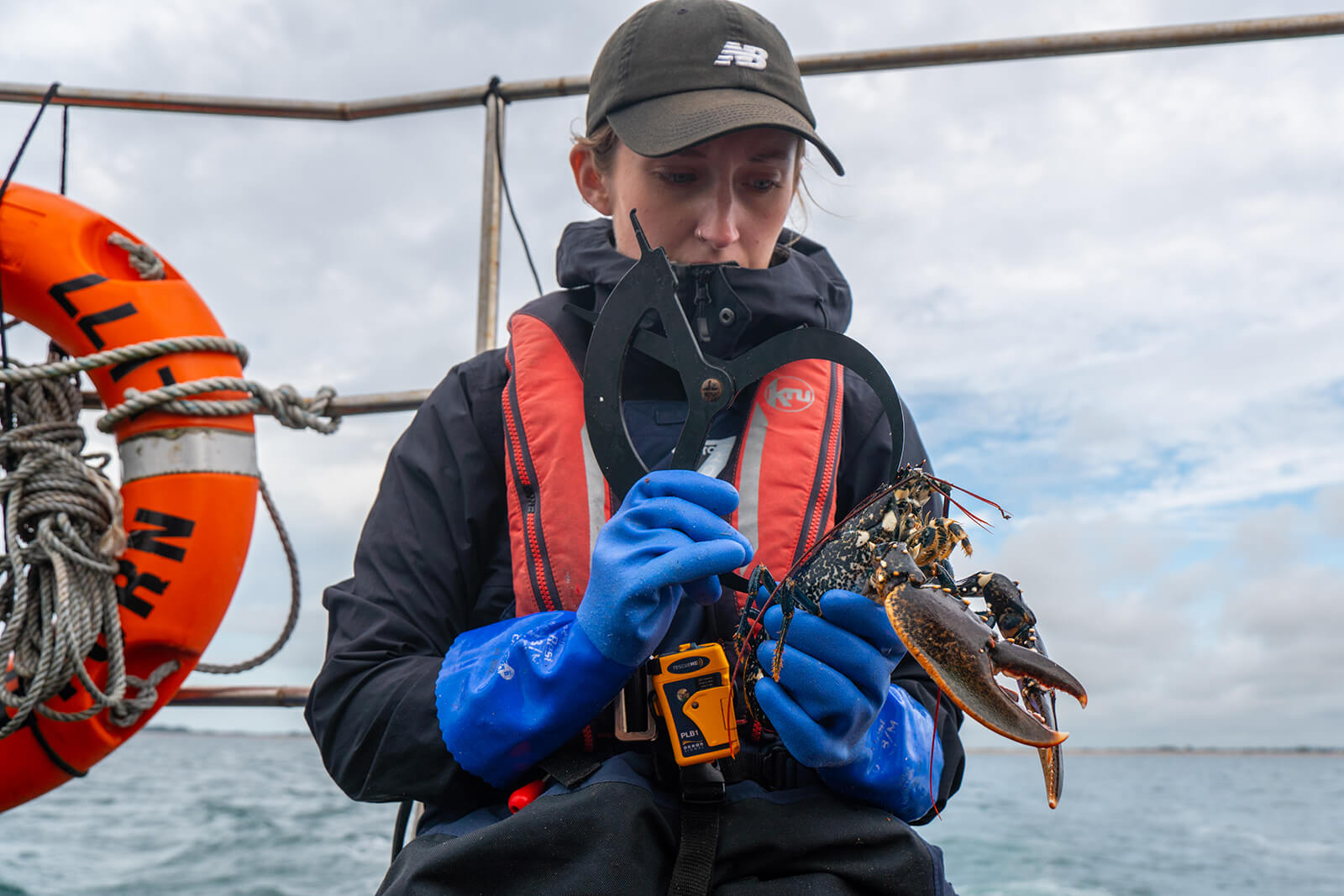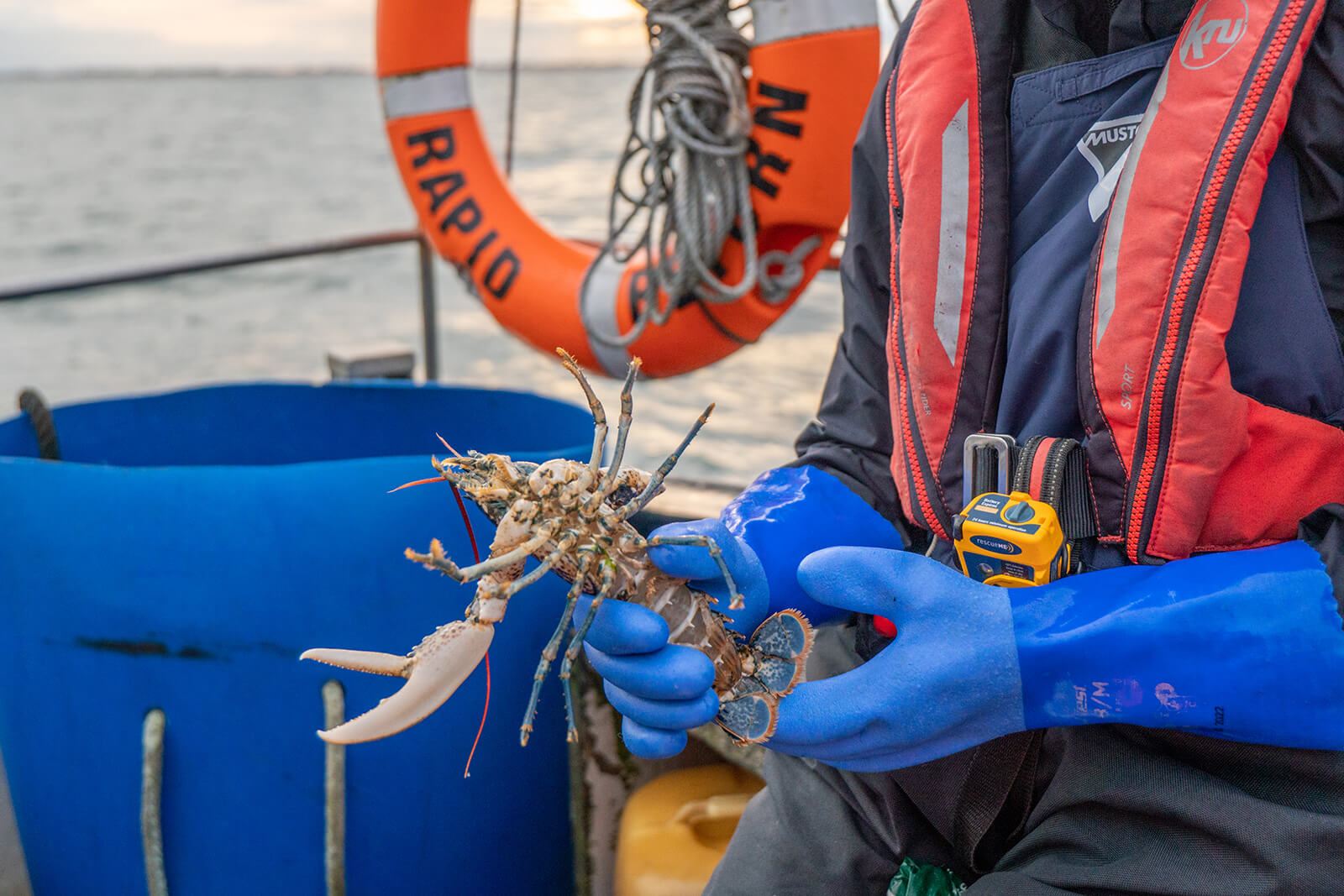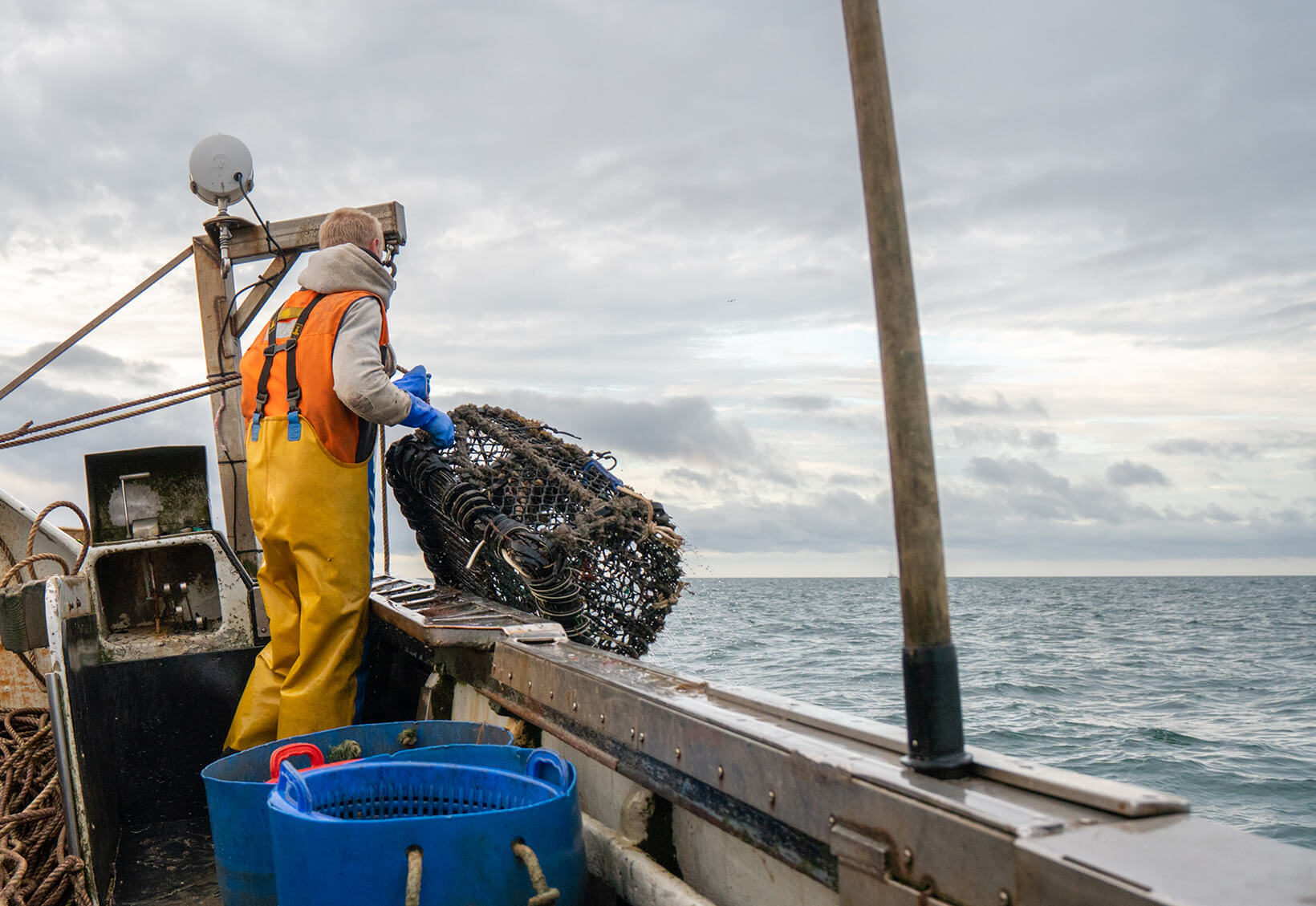Funding Circle supported 4 crab and lobster survey sites along the Sussex coastline in 2024
Funding Circle chose to take action towards protecting marine life in 2024, by sponsoring 4 crab and lobster survey sites as part of the Sussex Kelp Recovery Project. Funding Circle worked with GreenTheUK to fund innovative research led by Blue Marine Foundation and University of Sussex. This report outlines the findings from the 2023 survey report and includes data from Funding Circle survey sites.
Introduction
In the late 1970s, abundant kelp beds between Selsey and Shoreham-by-Sea teemed with life. This biodiverse environment played a key ecological role providing shelter, feeding and nursery grounds for marine life, including commercially important crustaceans. However, by the end of the 1990s, 96 per cent of the kelp had disappeared. Among the factors that caused the kelp to disappear were the great storm of 1987 and intensive fishing activity in the area using heavy trawl nets (trawling), which, when dragged along the seafloor, can destroy seabed habitats.
In 2010, an inshore habitat map commissioned by Sussex Inshore Fisheries and Conservation Authority (IFCA) showed how habitats in the area had changed and ignited discussions about kelp's role in the ecosystem. Over subsequent years, Sussex IFCA, who manage the area from the shoreline out to 6 nautical miles, created a compelling case for a new piece of legislation which aimed to protect essential fish and marine habitats and support sustainable inshore fisheries: the Sussex Nearshore Trawling Byelaw.
The Nearshore Trawling Byelaw (NTB) came into effect in March 2021, prohibiting trawling over 304 square kilometres of seabed. To understand the ecological, social and economic value of kelp and the benefits of the Byelaw on kelp recovery, local inshore fisheries and the wider ecosystem, Blue Marine and partners of the Sussex Kelp Recovery Project have established an extensive monitoring and research programme.
Part of this research includes a long-term programme of potting surveys to understand the impact of the Byelaw on commercial crustacean fisheries, specifically European lobster (Homarus gammarus) and brown crab (Cancer pagurus) (also known as edible crab). The first surveys were carried out in 2021, within six months of the introduction of the Byelaw, establishing a baseline against which future changes can be measured.
Methodology
In 2021, data was collected on crab and lobster abundance, carapace size, weight, sex ratio and condition at 12 sites around Selsey, both within and outside the Nearshore Trawling Byelaw area (stated as “trawling exclusion zone” or “NTB” throughout the report), with the help of local fishermen. In 2022, surveys were conducted at a total of 24 sites, extending the range of the project to include sites off Brighton and Eastbourne as well as Selsey, again surveying on board local fishing boats. In August 2023, the aim was to further increase the number of sites surveyed across the Byelaw area to increase replication. However, due to weather and the availability of fishermen, only 21 sites were able to be surveyed around Selsey Bill and Brighton (Figure 1). This allowed the collation of a three-year dataset at Selsey, where the effects of the Byelaw on crab and lobster populations could be monitored over time. Therefore, the analysis undertaken in 2023 included Selsey data only and the other data collected will form part of the wider long-term dataset in future years.
To understand the effect of the Nearshore Trawling Byelaw on commercial crustacean species over time, the independent variables in this analysis were ‘Treatment’, split into two categories of ‘NTB’ and ‘Outside’ the trawling exclusion zone, and ‘Year’ (2021, 2022 and 2023) to analyse differences between years. Treatments were defined as:
- NTB: inside the trawling exclusion zone (Nearshore Trawling Byelaw area)
- Outside: outside the trawling exclusion zone (Open Control sites)
In order to see if there were any differences in crab and lobster population metrics inside and outside the trawling exclusion zone in 2023 across a wider area, the 2023 data from Selsey and Brighton was combined and a second supplementary test for significant differences was completed.
 Figure 1: Survey sites used in data analysis across Selsey and Brighton from 2021, 2022 and 2023
Figure 1: Survey sites used in data analysis across Selsey and Brighton from 2021, 2022 and 2023
Key findings
- Overall, the results from the three-year dataset at Selsey showed that there were no significant differences in crab or lobster population metrics between inside and outside the trawling exclusion zone or between years of 2021, 2022 and 2023. This is expected, given that this survey was undertaken only two years and five months from when the Nearshore Trawling Byelaw was designated.
- The results from Selsey show a gradual increase in lobster abundance over the three years in both treatments between 2021 and 2023 (Figure 2), aligning with anecdotal reports from fishermen.
- A gradual decline of brown crab is also shown at Selsey in both treatments between 2021 and 2023 (Figure 3), a similar trend to other regions across the UK.
- In 2023, brown crab condition reduced across both treatments from 2021 and 2022 data at Selsey (Figure 4). There was also an occurrence of a moribund brown crab. The cause of decline and brown crab death is not known, but it is suggested that rapidly changing water temperatures could be having an effect, due to the time of year the deaths are occurring.
- Despite not being significant, another notable trend seen at Selsey is the higher number of small lobsters (below Minimum Conservation Reference Size) inside the trawling exclusion zone across all years (Figure 5). This could potentially suggest that the exclusion zone is providing shelter and nursery grounds for juvenile individuals.
Conclusion
The pot fishery survey completed in August 2023 was conducted two years and five months after designation of the Byelaw. As this data is part of a long-term study, it is still too early to make solid conclusions on the impact of the Nearshore Trawling Byelaw on brown crab and European lobster fisheries. However, it is expected, as evidenced in other areas where trawling is removed, that as the kelp beds and other habitats recover, crab and lobster populations will increase in number, there will be a greater number of larger mature individuals and juvenile individuals, and individuals caught would be in better condition.
During the surveys in 2022 and 2023, observations of sedimentation in crab and lobster potting areas were reported by all fishermen, especially out of Brighton Marina. Such reports are important to note due to the potential influence of sediment on kelp settlement and growth and crustaceans, which could alter their response to spatial management measures.
Appendices
 Figure 2: Mean abundance (Catch Per Unit Effort (CPUE)) of lobster caught inside the Nearshore Trawline Byelaw area (NTB) and Outside zone across 2021, 2022 and 2023 at Selsey.
Figure 2: Mean abundance (Catch Per Unit Effort (CPUE)) of lobster caught inside the Nearshore Trawline Byelaw area (NTB) and Outside zone across 2021, 2022 and 2023 at Selsey.
 Figure 3: Mean abundance of brown crab caught inside the Nearshore Trawling Byelaw area (NTB) and Outside and between 2021, 2022 and 2023 at Selsey.
Figure 3: Mean abundance of brown crab caught inside the Nearshore Trawling Byelaw area (NTB) and Outside and between 2021, 2022 and 2023 at Selsey.
 Figure 4: Percentage frequency of brown crab caught in each Condition category across 2021, 2022 and 2023 at Selsey and between a) inside the Nearshore Trawling Byelaw area (NTB) and b) Outside.
Figure 4: Percentage frequency of brown crab caught in each Condition category across 2021, 2022 and 2023 at Selsey and between a) inside the Nearshore Trawling Byelaw area (NTB) and b) Outside.
 Figure 5: Mean abundance of lobster caught below MCRS inside the Nearshore Trawling Byelaw area (NTB) and outside the trawling exclusion zone between 2021, 2022 and 2023 at Selsey.
Figure 5: Mean abundance of lobster caught below MCRS inside the Nearshore Trawling Byelaw area (NTB) and outside the trawling exclusion zone between 2021, 2022 and 2023 at Selsey.
Acknowledgements
GreenTheUK would like to extend a huge thank you to Blue Marine Foundation and their skippers, crew, and individuals who assisted with these surveys.
Research assistants: Madi Bowden-Parry (University of Exeter), Seshi Humphrey-Ackumey (Blue Marine Foundation), Vanessa Simons (Sussex IFCA), and Ella Garrud (Sussex Wildlife Trust).
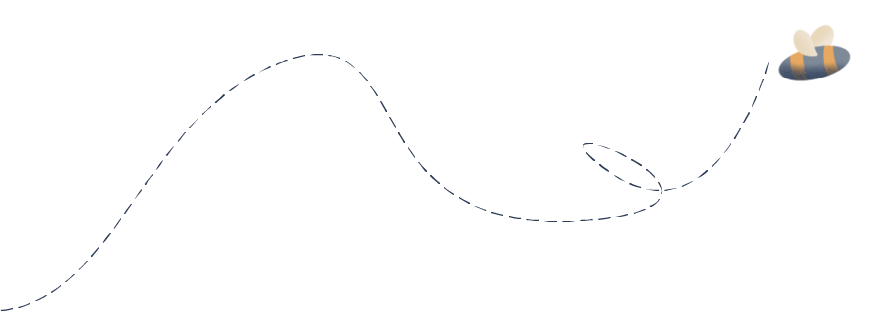
UN's Sustainable Development Goals
As a GreenTheUK partner, you support projects that are in line with the UN Sustainable Development Goals.

Take urgent action to combat climate change and its impacts.

Conserve and sustainably use the oceans, seas and marine resources for sustainable development.

















